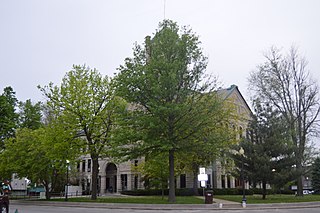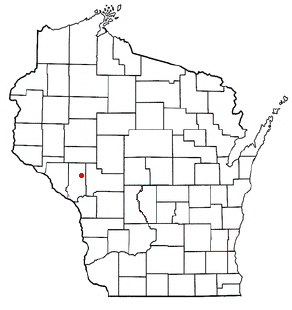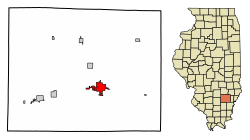
Dover is a village in Bureau County, Illinois, United States. The population was 135 at the 2020 census. It is part of the Ottawa Micropolitan Statistical Area.

Taylorville is a city in and the county seat of Christian County, Illinois, United States. The population was 10,506 at the 2020 census, making it the county's largest city.

Chrisman is a city in Ross Township, Edgar County, Illinois, United States. The population was 1,312 at the 2020 census.

Melvin is a village in Ford County, Illinois, United States. The population was 452 at the 2010 census.

West City is a village in Franklin County, Illinois, adjacent to the county seat of Benton. The population was 661 at the 2010 census.

Yates City is a village in Knox County, Illinois, United States. The population was 642 at the 2020 census. It is part of the Galesburg Micropolitan Statistical Area.

Gillespie is a city in Macoupin County, Illinois, United States, and part of the Metro East region of the St. Louis metropolitan area. The population was 3,168 at the 2020 census.

Monticello is a city and county seat of Piatt County, Illinois, United States. The population was 5,941 at the 2020 census.

Prophetstown is a city in Whiteside County, Illinois, United States. The population was 2,080 at the 2010 census, up from 2,023 in 2000.

Eureka is a city and the county seat of Woodford County, Illinois. The population was 5,295 at the 2010 census. Eureka is part of the Peoria, Illinois Metropolitan Statistical Area.

Pittsford is a town in Rutland County, Vermont, United States. As of the 2020 census, the town population was 2,862. Named for William Pitt, it has two picket forts used in the American Revolutionary War.

Vienna is a town in Dane County, Wisconsin, United States. The population was 1,666 at the 2020 census. The unincorporated community of Norway Grove is located in the town.

LeRoy is a town in Dodge County, Wisconsin, United States. The population was 1,116 at the 2000 census. The unincorporated communities of Farmersville and LeRoy are located in the town.

Waterloo is a town in Grant County in the U.S. state of Wisconsin. The population was 557 at the 2000 census. The unincorporated communities of Burton and McCartney is located in the town.

Brodhead is a city in Green and Rock counties in the U.S. state of Wisconsin. The population was 3,274 at the 2020 census. In February 2000, the city annexed a portion of land from the Town of Spring Valley in Rock County.

Markesan is a city in Green Lake County, Wisconsin, United States. The population was 1,476 at the 2010 census. The center of population of Wisconsin is located in Markesan.

Lima is a town in Sheboygan County, Wisconsin, United States. The population was 2,948 at the 2000 census. It is included in the Sheboygan, Wisconsin Metropolitan Statistical Area. The unincorporated communities of Gibbsville, Hingham, and Ourtown are located in the town. The ghost town of Kennedy Corners was also located in the town.

Pigeon is a town in Trempealeau County, Wisconsin, United States. The population was 894 at the 2000 census. The unincorporated community of Coral City is located in the town.
Melrose is a town in Jackson County, Wisconsin, United States. The population was 402 at the 2000 census. The Village of Melrose is located within the town.
Waterloo is a town in Jefferson County in the U.S. state of Wisconsin. The population was 909 at the 2010 census. The city of Waterloo is located within the town. The unincorporated community of Portland is also located partially in the town.






















